Tektronix MDO4000C 1 GHz oscilloscope series with 6 GHz spectrum analyzer
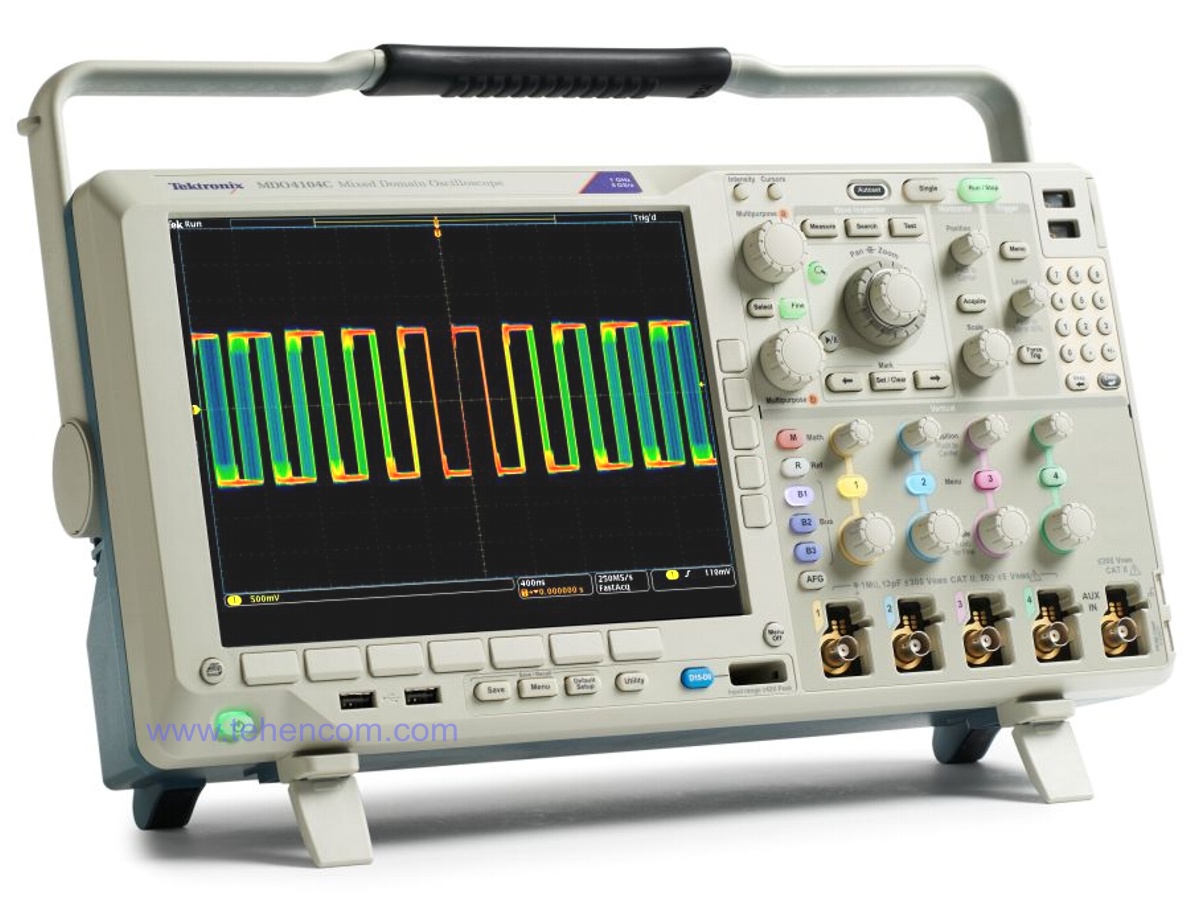
Brief description of the series
Mixed domain integrated oscilloscope (6 in 1) series Tektronix MDO4000C is a device that provides deep analysis of analog, digital and RF signals with cross-correlation in time. This oscilloscope combines six instruments: professional digital oscilloscope, spectrum analyzer up to 3 GHz or 6 GHz, arbitrary waveform and standard function generator, 16 channel logic analyzer, digital serial bus protocol analyzer and digital volt/frequency meter.
The MDO4000C Series oscilloscope can be configured to suit your needs and upgraded as you go. You can add features that you need now or may need later. A complete description of all the characteristics of these oscilloscopes can be downloaded below on this page in the Documentation section.
All models of the series
The Tektronix MDO4000C series consists of four models, which are presented in this interactive table. To see all the characteristics of certain models, add them to the comparison.
| Model |
Bandwidth
|
Analog channels
|
Digital channels
|
Sample rate
|
Spectrum analysis
|
Weight
|
|---|---|---|---|---|---|---|
|
MDO4024C
|
200 MHz | 4 | 16 | 2.5 GS/s | 9 kHz – 3 GHz 9 kHz – 6 GHz | 5.1 kg 5.5 kg |
|
MDO4034C
|
350 MHz | 4 | 16 | 2.5 GS/s | 9 kHz – 3 GHz 9 kHz – 6 GHz | 5.1 kg 5.5 kg |
|
MDO4054C
|
500 MHz | 4 | 16 | 2.5 GS/s | 9 kHz – 3 GHz 9 kHz – 6 GHz | 5.1 kg 5.5 kg |
|
Expert's choice
MDO4104C
|
1 GHz | 4 | 16 | 5 GS/s | 9 kHz – 3 GHz 9 kHz – 6 GHz | 5.1 kg 5.5 kg |
Main features of the series
200 MHz, 2.5 GS/s, 4 channels (model MDO4024C).
350 MHz, 2.5 GS/s, 4 channels (model MDO4034C).
500 MHz, 2.5 GS/s, 4 channels (model MDO4054C).
1 GHz, 5 GS/s, 4 channels (model MDO4104C).
Record length: 20 million points to the channel.
Vertical resolution: 8 bit (11 bits in high resolution mode).
Sensitivity: 1 mV/div to 10 V/div with calibrated fine tuning.
Continuous waveform capture rate: up to 340,000 waveforms/s.
Automatic measurements: 30 (time domain), 3 (frequency domain).
Built-in digital voltmeter and frequency counter (free of charge when registering the device).
Passive voltage probes with 3.9 pF input capacitance (standard).
Additional options: spectrum analyzer (up to 3 GHz or 6 GHz) performing spectrum capture time related with analog and digital oscilloscope inputs, generator of standard and arbitrary signals, logic analyzer for 16 digital channels, analyzer of serial bus protocols: I2C, SPI, RS-232/422/485/UART, Ethernet, USB 2.0, CAN, LIN, FlexRay, MIL-STD-1553, audio tires and others.
Screen 26.4 cm (resolution 1024 x 768). Interfaces: USB, Ethernet, XGA external monitor.
Weight: 5.5 kg. Dimensions: 229 x 439 x 147 mm. Working temperature: from 0°С to +50°С.
The following is a brief description of each of the six instruments that may be included with the Tektronix MDO4000C: Professional digital oscilloscope, spectrum analyzer up to 3 GHz or 6 GHz, signal generator freeform and standard functions, logic analyzer for 16 channels, protocol analyzer digital serial buses and digital voltmeter / frequency counter. You can download a full description of all the characteristics below on this page in the section Documentation.
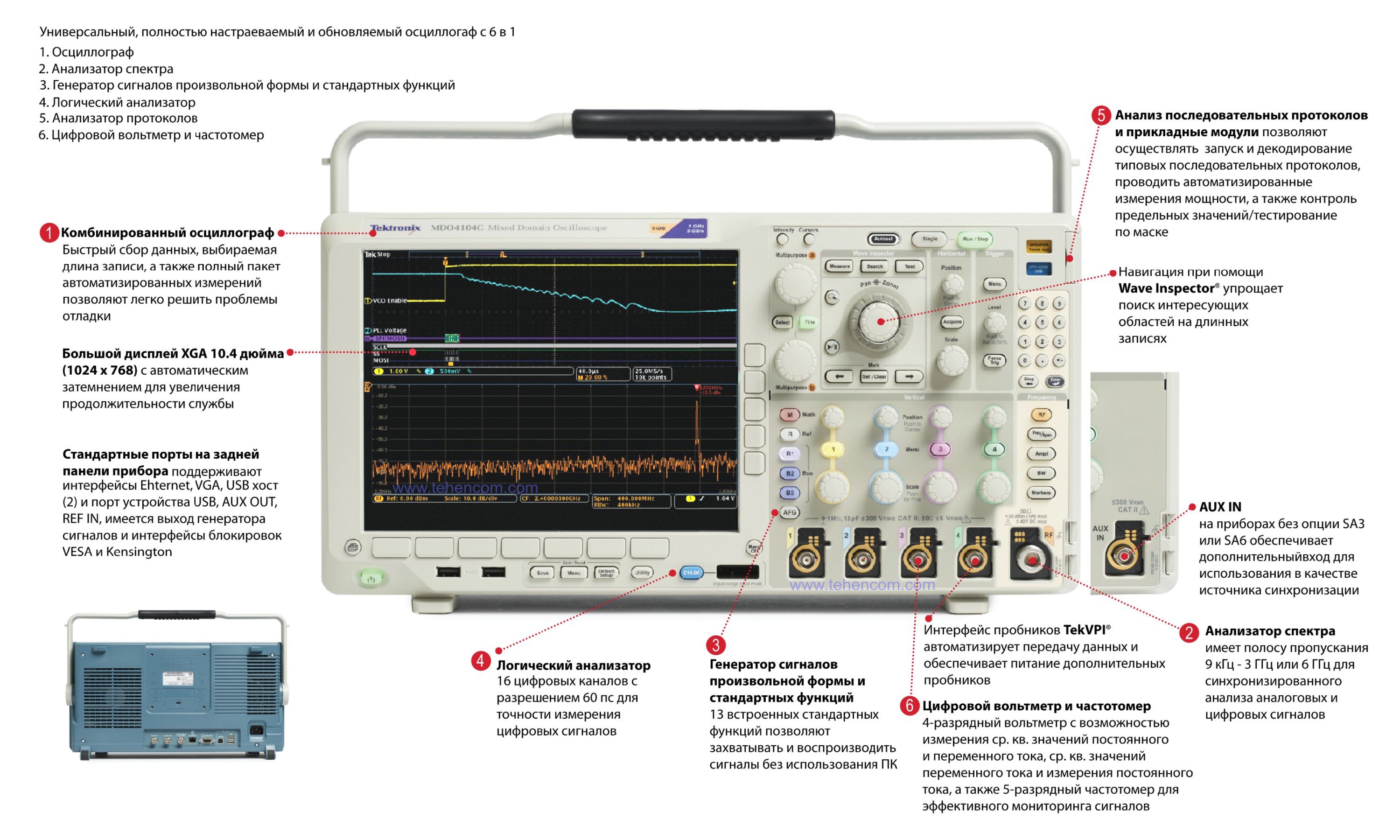
The MDO4000C Series combo oscilloscopes have the features to help you quickly and efficiently solve complex problems in the development and repair of modern electronic systems. With the built-in spectrum analyzer, this oscilloscope, which can simultaneously capture (with accurate timing) analog, digital, and RF signals, is ideal for testing built-in radios in electronic devices or detecting electromagnetic interference.
Need an oscilloscope faster and cheaper? Watch the series Tektronix MDO3.
Need more analogue and digital channels? Watch the series Tektronix MSO5.
Need an oscilloscope with bandwidth up to 33 GHz? See series Tektronix DPO/MSO70000.
Need galvanized isolated channels? See Tektronix TPS2000B or Tektronix THS3000.
Difficult to decide on a model? See helper: How to quickly choose an oscilloscope.
All series of modern oscilloscopes are presented here: Digital oscilloscopes.
Tektronix MDO4000C series video review
Watch this short video to see all the main features of the Tektronix MDO4000C series: professional digital oscilloscope, spectrum analyzer up to 3 GHz or 6 GHz, signal generator freeform and standard functions, logic analyzer for 16 channels, protocol analyzer digital serial buses and digital voltmeter / frequency meter.
Professional digital oscilloscope
The MDO4000C Series oscilloscope is a very high-end oscilloscope with a bandwidth from 200 MHz to 1 GHz (depending on the model) and a variety of features to speed up every stage of debugging, from quickly detecting and capturing anomalies to searching for events of interest in the waveform record, analyzing the characteristics of these events and behavior of the device under study.
In order to fix the problem, you need to localize it. Every design engineer has to spend time finding problems in the device being developed, which, in the absence of the necessary tools, turns into a very tedious and time-consuming process. Digital Phosphor Technology (afterglow effect) with the FastAcq capture mode allows you to quickly assess the true processes occurring in the device under study. The fast acquisition rate (over 340,000 wfms/sec) will provide a high probability of detecting even the most transient problems that are quite common in digital systems: runts, glitches, timing issues, and more.
Brightness gradation to indicate the frequency of occurrence of rare transitions relative to the average characteristics of the signals allows you to improve the display of rare events. Due to this, frequently occurring events or, in the case of non-periodic anomalies, rarely occurring events are immediately highlighted. Read more in a separate article: description of DPO technology.
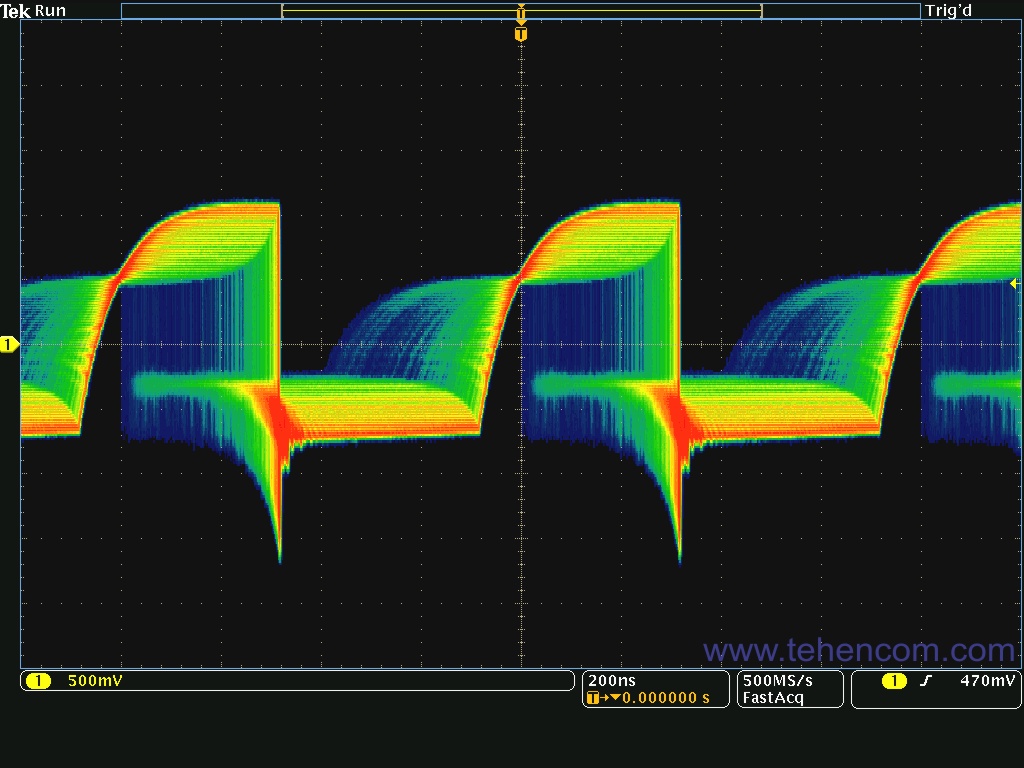
Detecting a device malfunction is only the first step. Now you need to capture the event of interest to determine the cause of its occurrence. The MDO4000C Series oscilloscope offers more than 125 trigger combinations, providing a full range of options to quickly find the event of interest. Triggering can be on runt, logic combination, pulse/glitch width, setup and hold time violations, serial packets, and parallel bus data.
With a record length of up to 20 million points, you can capture multiple events of interest and even thousands of sequential packets at once while maintaining high resolution, allowing you to examine the finest signal details and record reliable measurements.
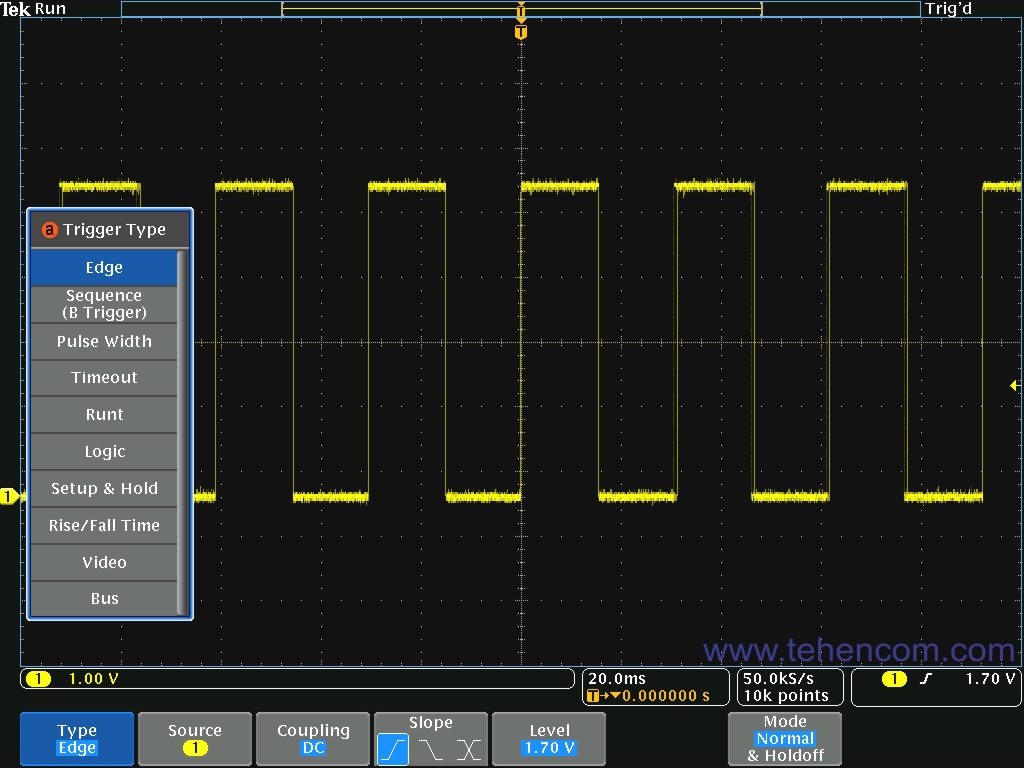
Long record length allows you to get thousands of screens of information with oscillograms with one capture. With the Wave Inspector control panel, the industry's best navigation and auto-search tool, you can find events of interest in seconds. A dedicated dual front-panel Wave Inspector rotary knob provides intuitive zoom and pan control.
The inner knob controls the magnification factor (or scaling). Turning it clockwise stretches the signal with a gradual transition to higher magnification factors, while turning it counterclockwise gradually reduces the magnification factor until the zoom is turned off. You no longer have to open multiple menus to adjust the image scale.
The outer knob moves the view window along the signal, allowing you to quickly reach the desired section of the waveform. In addition, the external knob is equipped with a feedback mechanism that allows you to control the panning speed of the waveform. The more you turn the outer knob, the faster the viewport moves. The panning direction is changed by simply turning the knob to the other side.
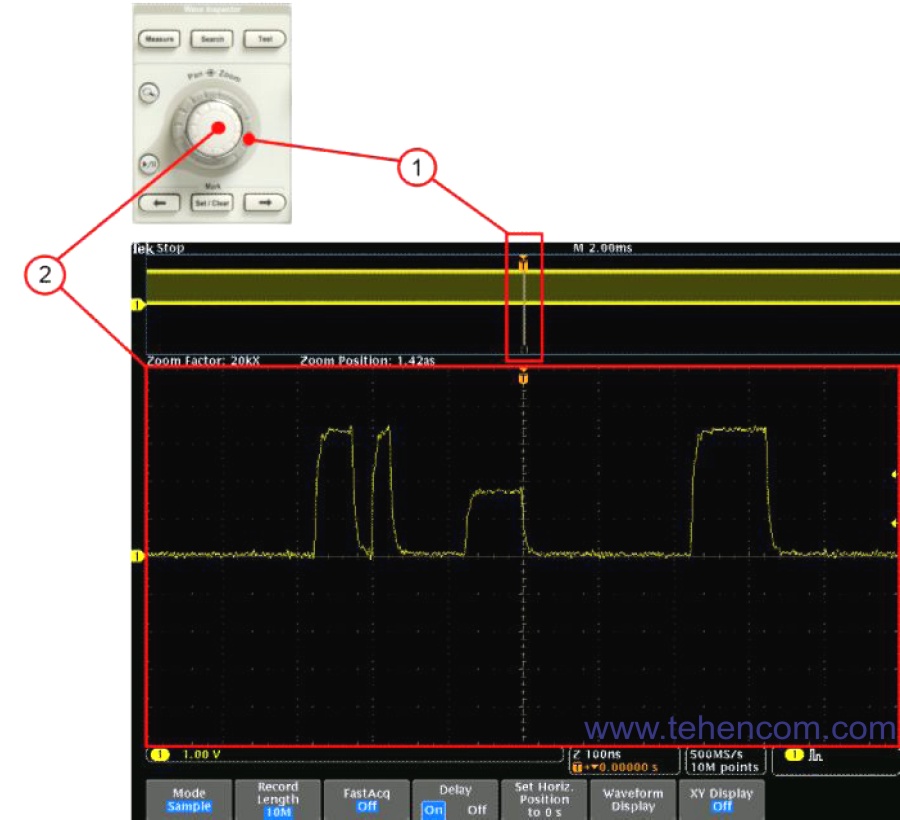
The Search button on the Wave Inspector panel allows you to automatically review long captured fragments and perform automatic searches for user-defined events. All occurrences of a given event are marked with search tags, which can be navigated between using the two front panel buttons Previous and Next. Events found during automatic search are displayed in the form of an event table with search labels. Each event is time-stamped to facilitate measurements of time intervals between events.
You can search for edges, pulses/glitches of a certain duration, specified timeouts, runts, logic combinations, setup and hold times, rising/falling edges of a certain duration, parallel bus data and the contents of I2C, SPI, RS-232/422/485/UART, USB 2.0, Ethernet, CAN, LIN, FlexRay, MILSTD-1553 and I2S/LJ/RJ/TDM and audio data package.
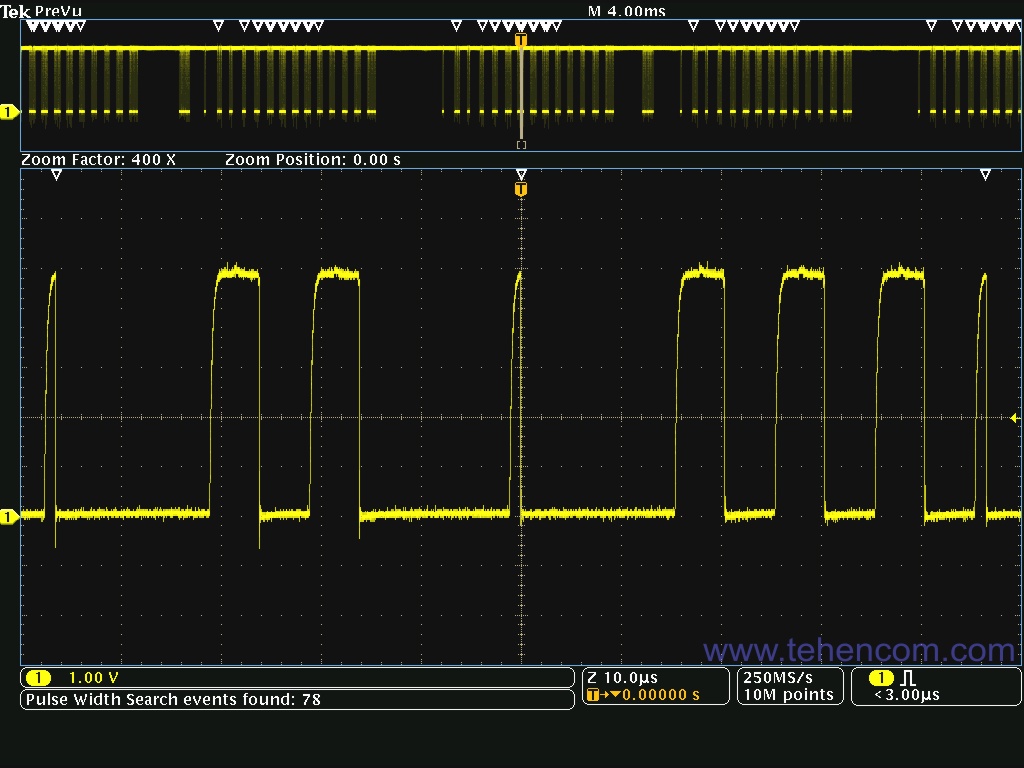
The Tektronix MDO4000C oscilloscope offers a comprehensive set of built-in analysis tools, including waveform and screen-based cursors, automatic measurements, advanced math features including an equation editor, histogram, FFT, and trend charts to visually determine how results change over time.
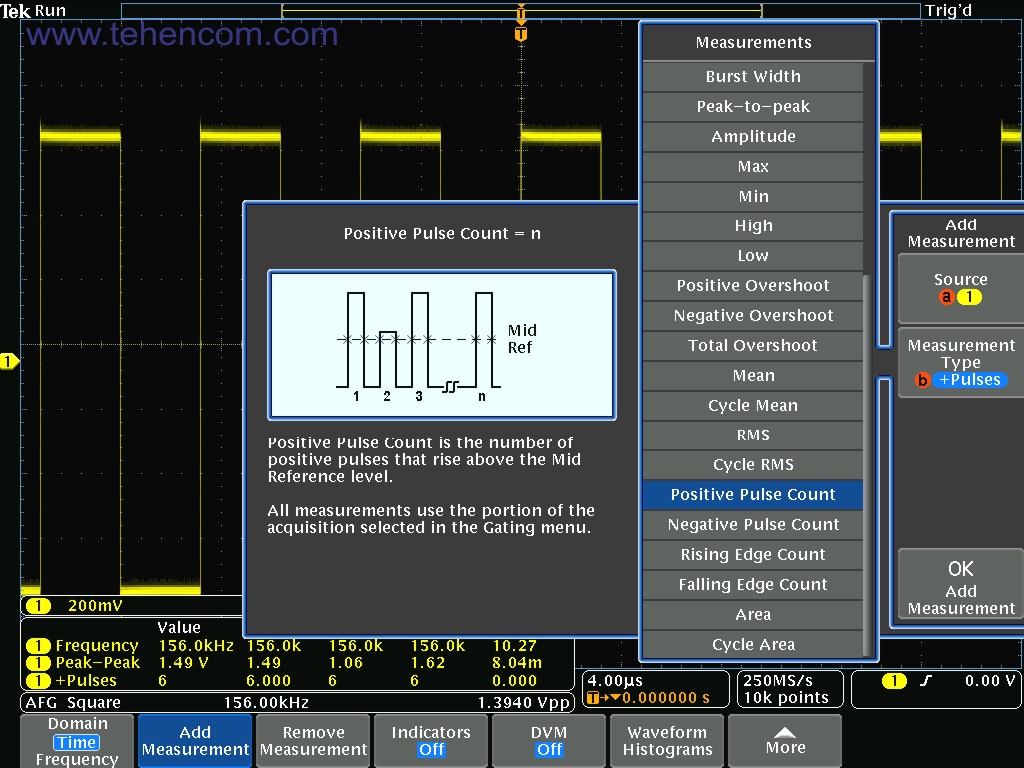
Spectrum analyzer
Tektronix MDO4000C Series oscilloscopes can be equipped with a full spectrum analyzer up to 3 GHz or up to 6 GHz. To do this, when ordering an oscilloscope, you must install one of the options: SA3 (spectrum analyzer from 9 kHz to 3 GHz) or SA6 (spectrum analyzer from 9 kHz to 6 GHz).
When using the RF input of the spectrum analyzer, the display of the MDO4000C Series oscilloscope changes to a full-screen display of the waveforms in the frequency domain. All key spectrum parameters such as center frequency, span, reference level and resolution bandwidth are easily and quickly configured using dedicated front panel menu buttons and keypad. For the convenience of analysis, automatic placement of markers on signal peaks and display of frequency and amplitude values for each peak can be performed. Peak search criteria can be configured by the user.
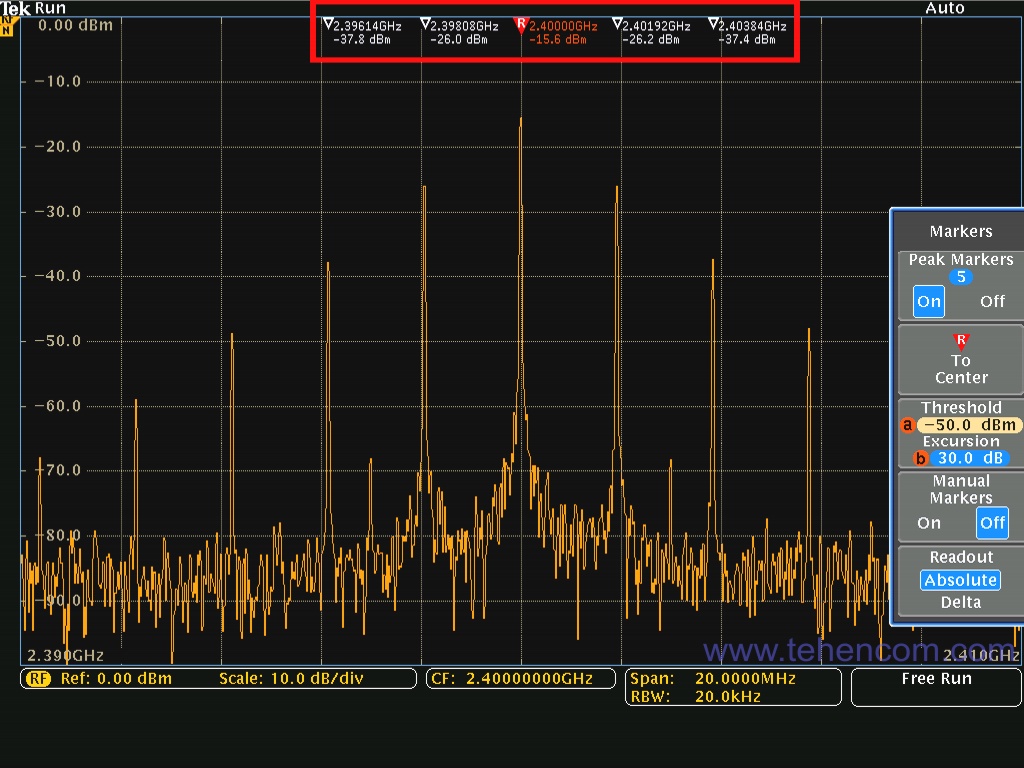
The MDO4000C Series oscilloscopes display spectra as a spectrogram, which is ideal for tracking slowly changing events in RF signals. The X-axis represents the frequency values (as in a normal spectrum graph), the Y-axis represents the time, and the color indicates the amplitude.
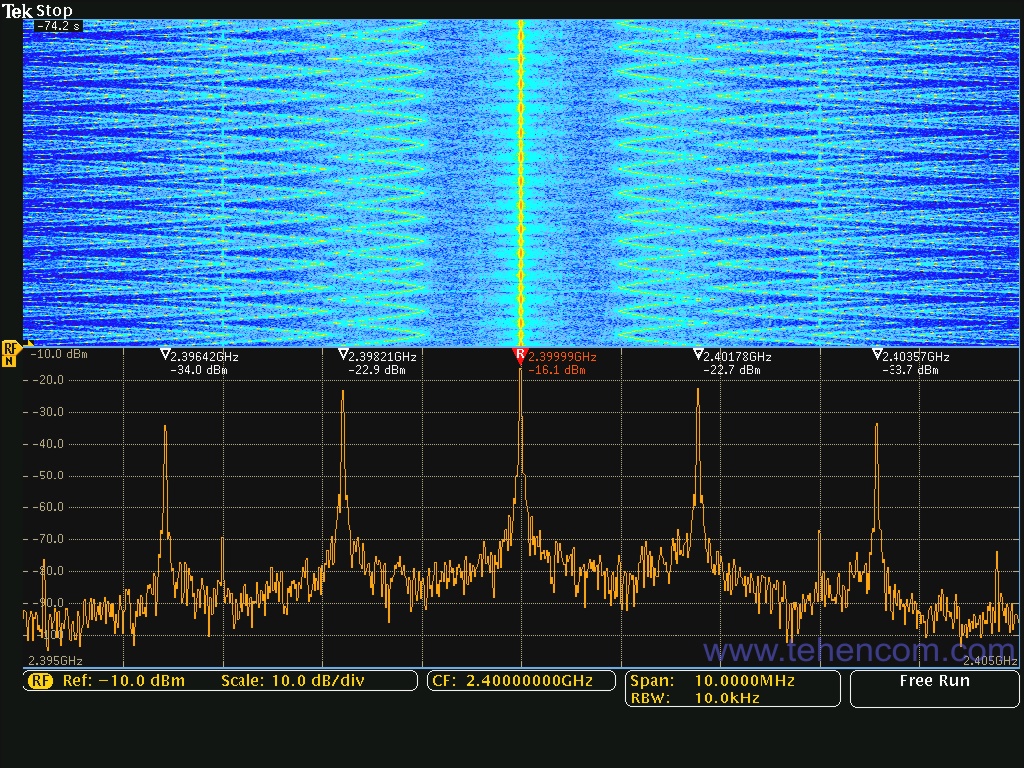
The functionality of the spectrum analyzer built into the MDO4000C is not limited to a simple representation of signals in the frequency domain, which allows you to do and conventional spectrum analyzers. The indisputable advantage of the MDO4000C series instruments is their ability to relate events in the frequency domain to their causes in the time domain.
When the MDO4000C oscilloscope has both RF and any of the analog or digital channels enabled, the instrument display is divided into two parts. The upper part serves for the traditional representation of signals in the time domain. The lower part displays the signal from the RF input in the frequency domain. We especially emphasize that the representation of the signal in the frequency domain is not the usual fast Fourier transform (FFT) of signals from analog or digital channels of the device, but a full-fledged signal spectrum received from a separate RF input with very high sensitivity.
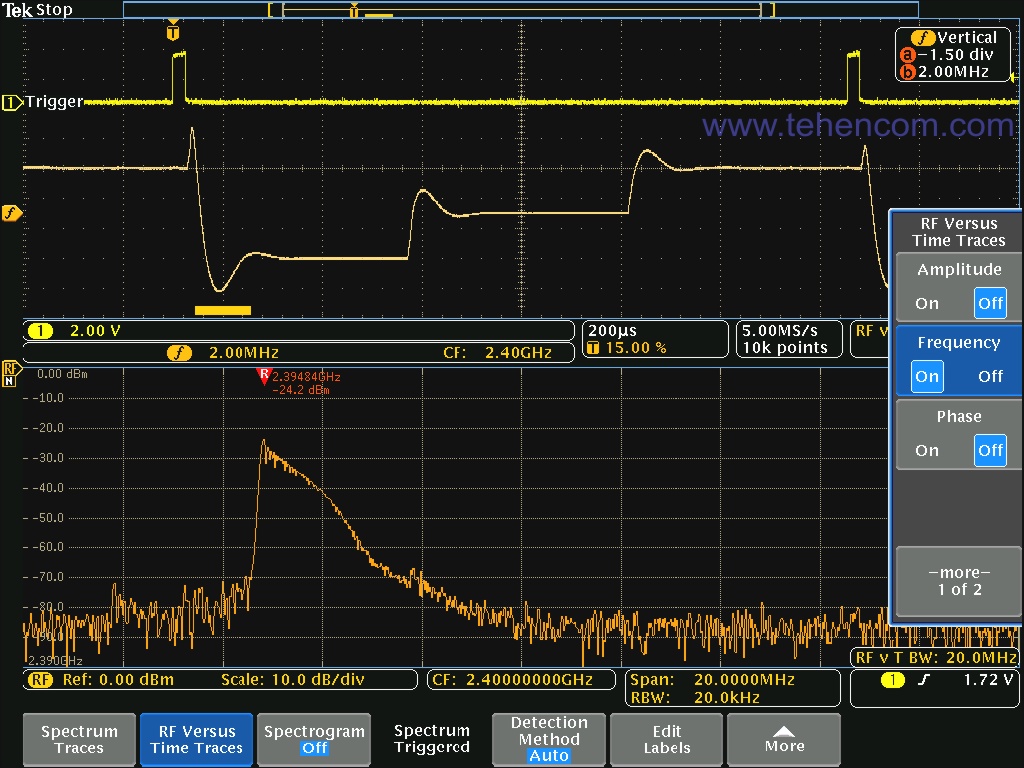
Signal generator
The MDO4000C Series combo oscilloscope may contain a built-in arbitrary waveform and standard function generator (option MDO3AFG), ideal for simulating sensor signals during debugging and for adding noise to useful signals to simulate adverse conditions. Built-in arbitrary waveform and standard function generator outputs signals up to 50 MHz: sine, square, sawtooth, pulse, DC, noise, cardinal sine (Sinc), Gaussian and Lorentzian, exponential rise and fall, haversine, and cardio waveforms .
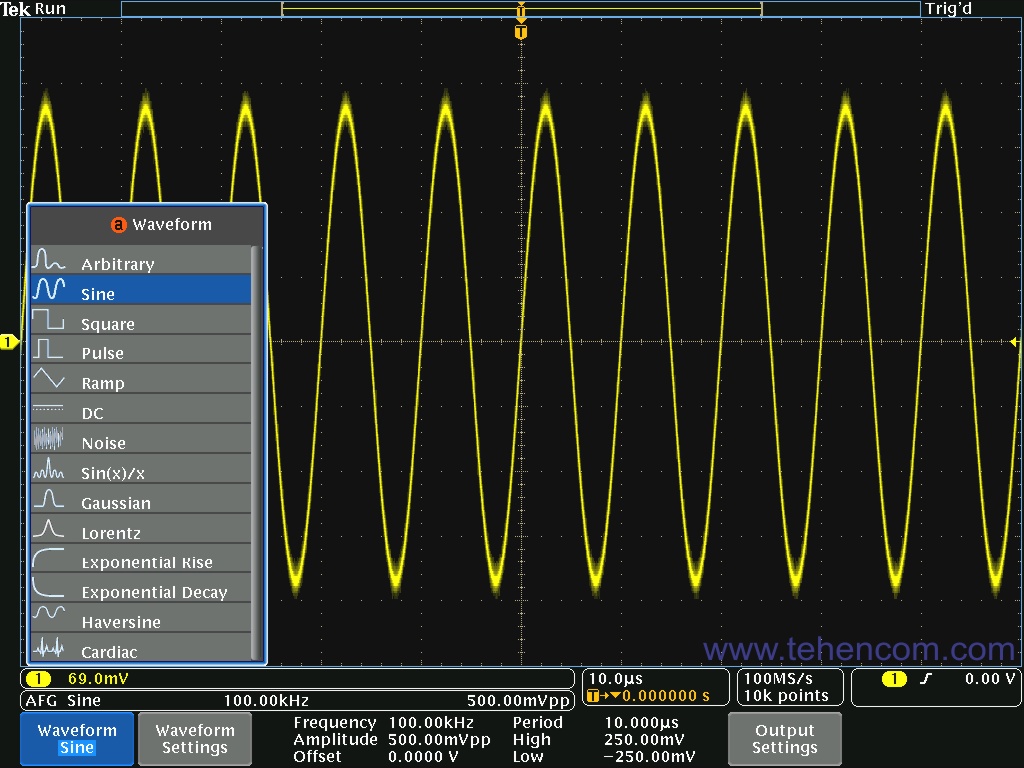
The arbitrary waveform generator memory can hold up to 128,000 points. It can record from an analog input, from a stored internal file, from a mass storage USB mass storage device, or from an external computer. The signal written to the editable memory can be modified using the on-screen editor, and then fed to the output of the generator. The MDO4000C Series oscilloscopes are compatible with ArbExpress Tektronix software, which allows you to quickly and easily create and edit complex waveforms on an external computer. To obtain the desired signal at the output of the generator, the signal file must be copied to the editable memory of the MDO4000C oscilloscope via USB, LAN, or using a removable USB drive.
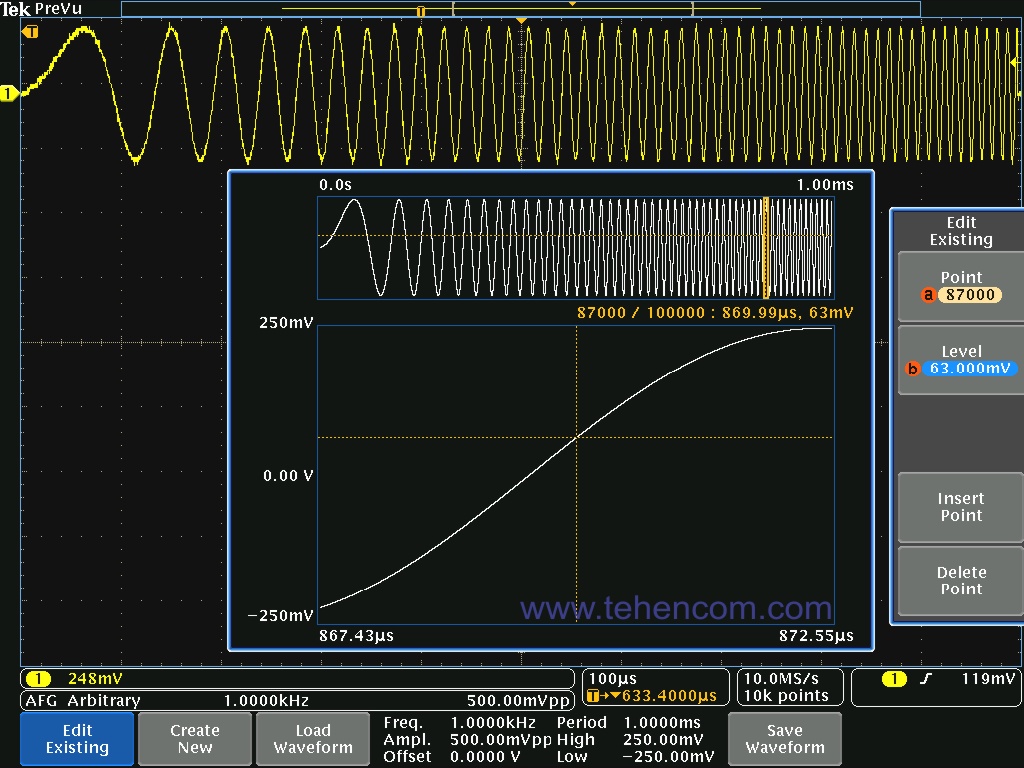
Logic analyzer
The MDO4000C Series combo oscilloscope may contain a built-in logic analyzer (option MDO3MSO), which provides 16 additional digital channels integrated into the oscilloscope user interface. This simplifies the work and makes it easier to solve problems when working with signals in different areas. Oscilloscopes support color-coding of digital signal logic levels, highlighting ones in green and zeros in blue. Color coding is also used in the digital channel monitor. The monitor displays the signal level (high or low) or the transient signal condition, which allows you to determine the activity of the channel without cluttering the screen with signal sweeps.
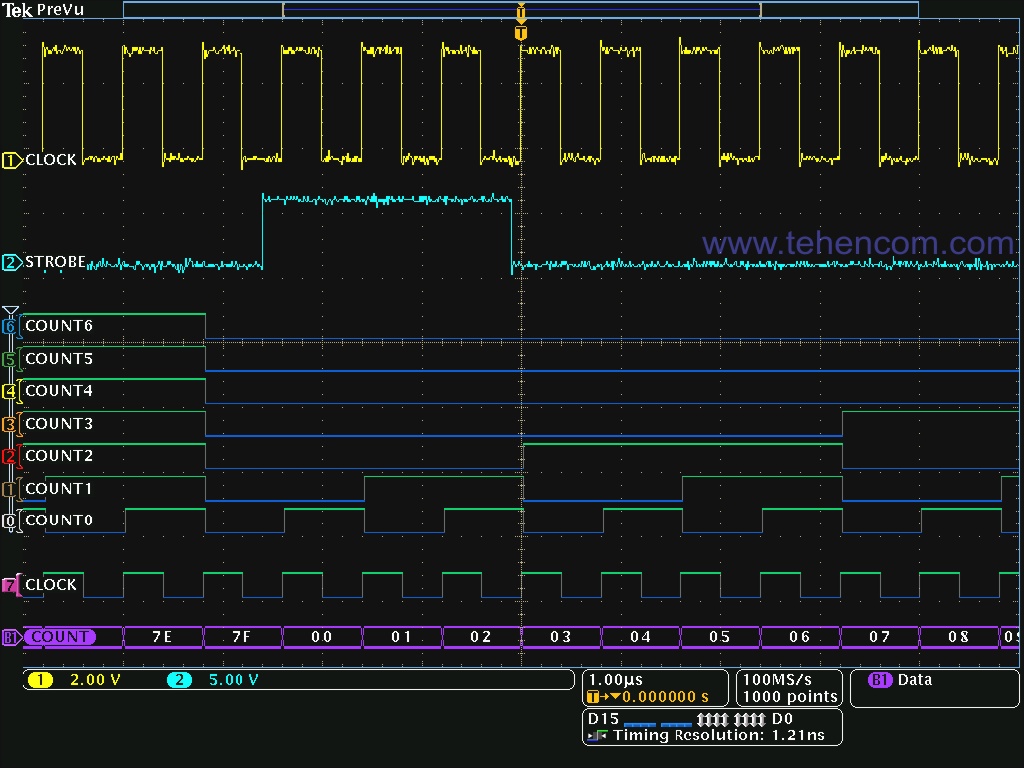
A special probe is used to connect the MDO4000C logic analyzer to the circuit under test. Tektronix P6616 MSO. This is a unique probe that has two pods with eight channels. Each of the pod's eight signal cables is equipped with a ground lug, making it easy to connect to the device under test. For quick identification, the first cable of each pod is colored blue.
As a common ground contact, a flat pin contact is used, which is widely used in test fixtures. To connect to the pin groups on the DUT board, you need to install adapters on the tips of the P6616 probe that extend the "ground" contact. The P6616 probe has excellent electrical performance, with an input capacitance of just 3 pF and an input impedance of 100 kΩ, digital waveform frequencies exceeding 500 MHz, and pulse widths of 1 ns.
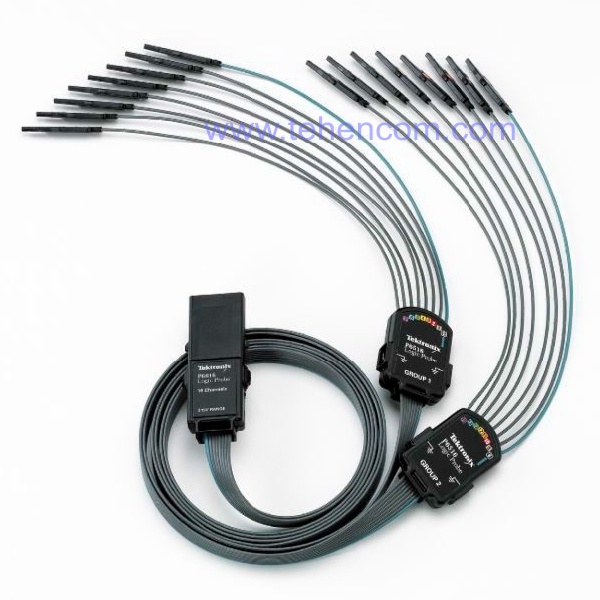
Serial protocol analyzer
A serial bus signal typically contains an address, control information, data, and a clock frequency, making it difficult to interpret the image on the oscilloscope screen and isolate events of interest. Automatic triggering, decoding, and searching for events and conditions on serial bus signals provides a robust set of serial bus debugging tools. With the appropriate option (DPO4BND, etc.), the MDO4000C series can automatically capture, decode and analyze serial communication protocols: I2C, SPI, RS-232/422/485/UART, Ethernet, USB 2.0, CAN, LIN, FlexRay, MIL-STD-1553, audio buses, and more.
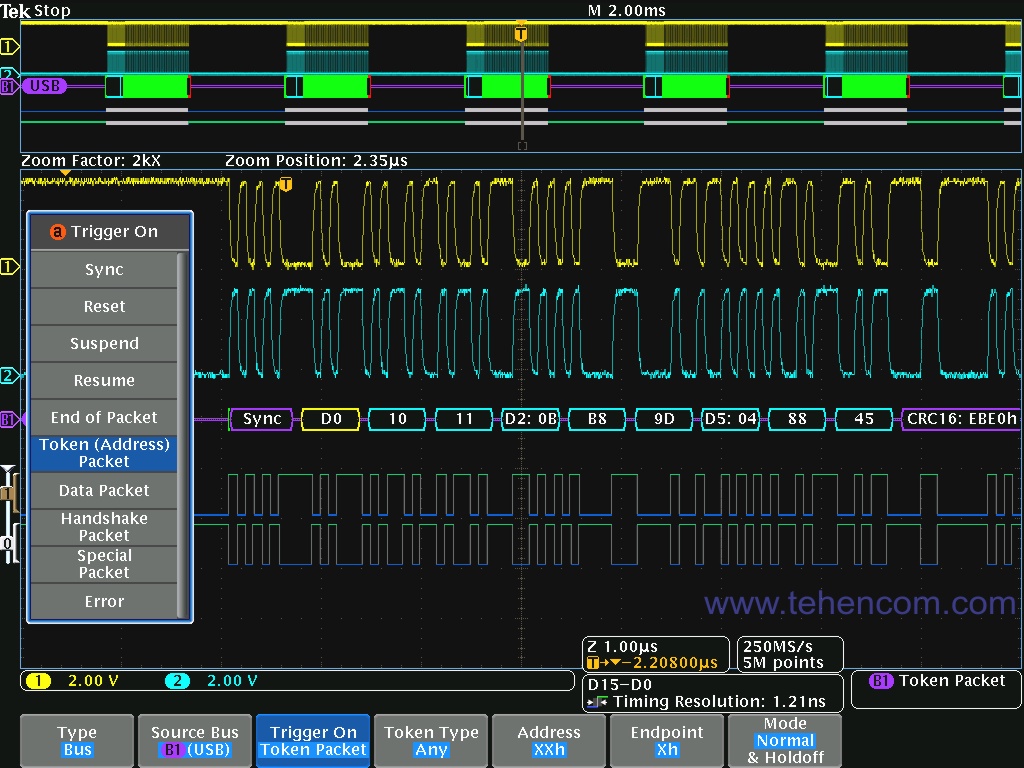
Digital voltmeter and frequency counter
The MDO4000C oscilloscope contains a built-in 4-digit digital voltmeter and a 5-digit frequency counter. The signal from any analog input of the oscilloscope can be applied to the voltmeter without switching probes. The measurement results are dynamically displayed on the display in numerical and graphical form. The display also shows the minimum, maximum and average measured values and the range of values measured during the previous 5 second interval. A digital voltmeter and frequency counter are available on all models of the MDO4000C series and are activated when the device is registered.
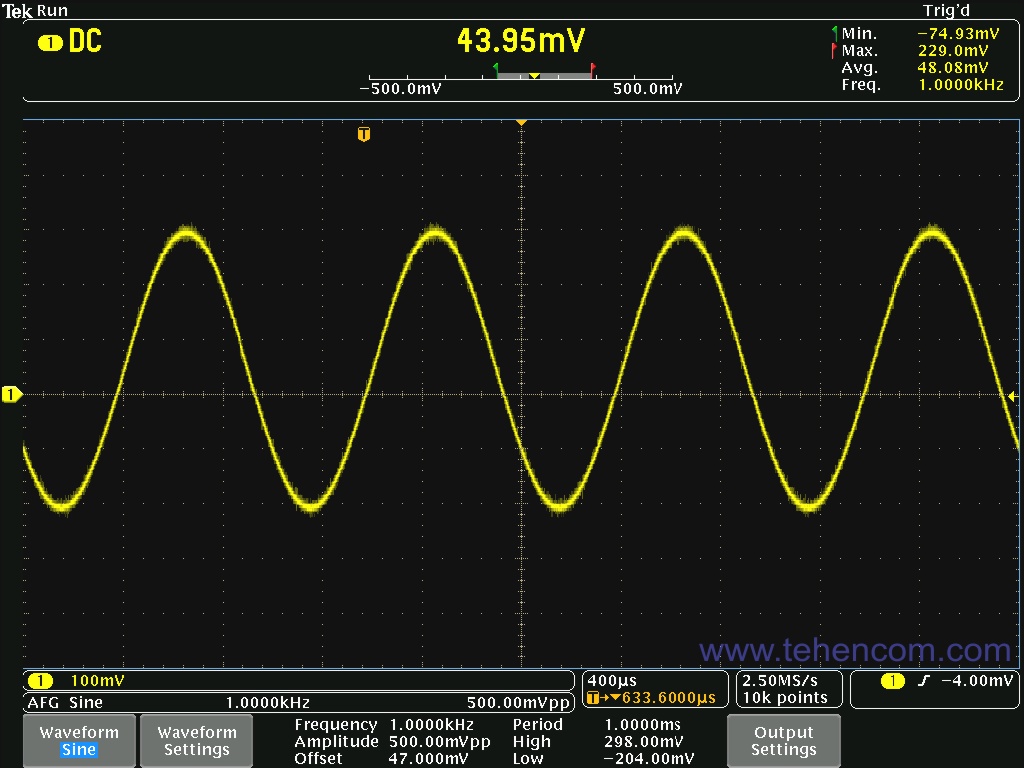
Specifications
Below are the key features of the Tektronix MDO4000C series oscilloscopes. For a complete list of technical specifications, see further on this page in the Documentation section.
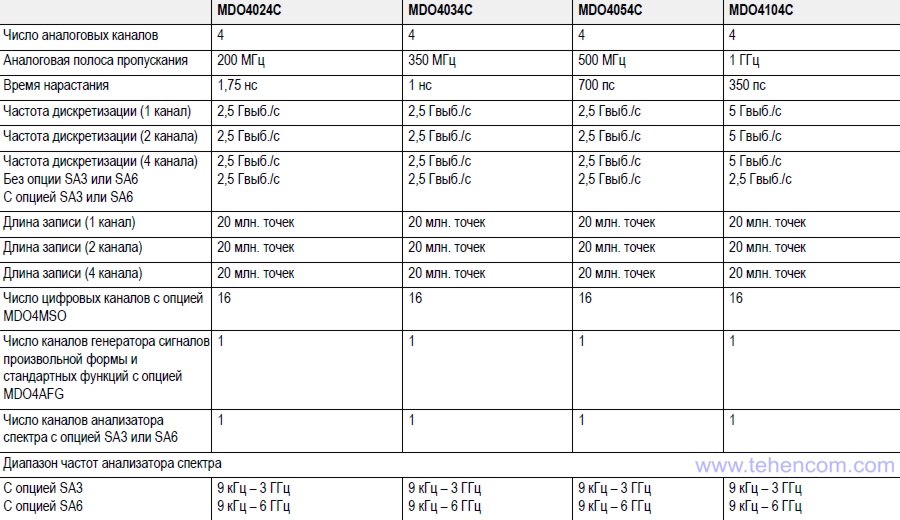
Package contents of Tektronix MDO4000C
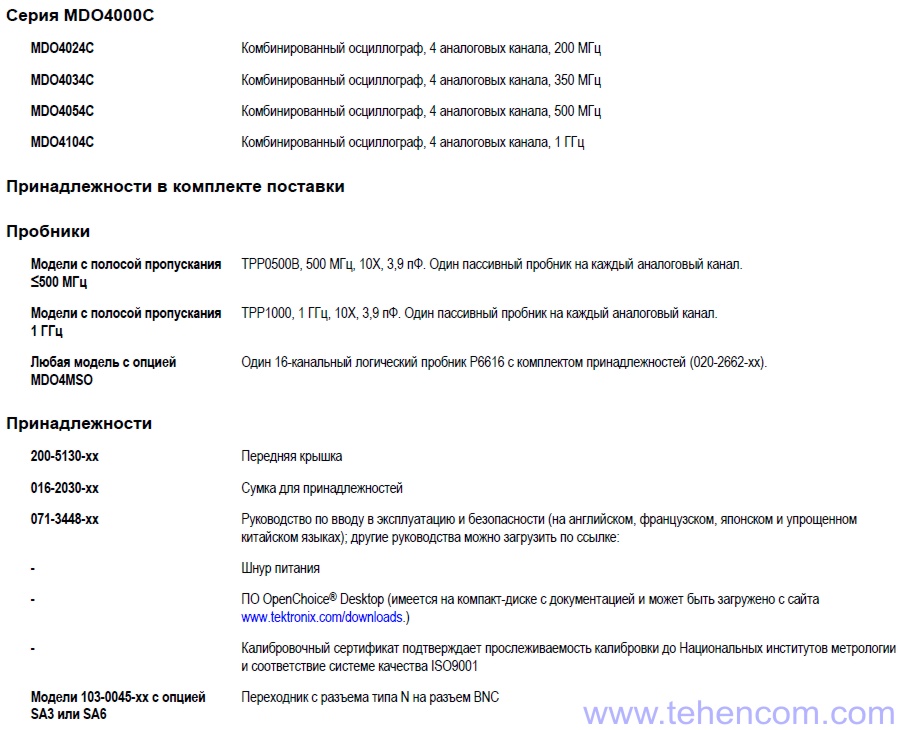
Options and accessories for Tektronix MDO4000C
Main options:
- option SA3 (built-in spectrum analyzer with frequency range from 9 kHz to 3 GHz);
- option SA6 (built-in spectrum analyzer with frequency range from 9 kHz to 6 GHz);
- option MDO4AFG (built-in generator for creating 13 standard waveforms as well as arbitrary waveforms);
- option MDO4MSO (Built-in logic analyzer with 16 digital channels, complete with P6616 digital probe and accessories);
- additional options (DPO4BND, DPO4AERO, DPO4AUDIO, DPO4AUTO, DPO4COMP, DPO4EMBD, DPO4ENET, DPO4USB) protocol analyzer for decoding and analyzing serial buses: I2C, SPI, RS-232/422/485/UART, Ethernet, USB 2.0, CAN, LIN, FlexRay, MIL-STD-1553, audio buses and others;
- option DPO4PWR (power supply analysis module that allows you to quickly and accurately analyze the quality of supply voltages, switching losses, harmonics, safe operating area, modulation, ripple, slew rate of current dI/dt and voltage dV/dt).
The complete list of options and accessories for the MDO4000C includes up to a hundred different items.
Documentation
This PDF documentation provides the most comprehensive description of the Tektronix MDO4000C Series oscilloscope features, specifications, and modes of operation:
Tektronix MDO4000C series mixed domain oscilloscope description (in Russian) (46 pages; 3 MB)
And here you can find our tips and other useful information on this topic:
How to quickly choose an oscilloscope – selection criteria, typical applications and popular models
Comparison of oscilloscopes with a bandwidth of 500 MHz
DPO digital phosphor technology in oscilloscopes – principle of operation, application examples
Passive voltage probes for oscilloscopes
How to buy equipment cheaper – discounts, special prices, demo and used devices
To simplify the process of choosing an oscilloscope, you can use our experience and recommendations. We have over 20 years of practical supply experience and can immediately answer many questions about models, options, delivery times, prices and discounts. This will save your time and money. For this it's simple call us or write to us at E-mail and we will be happy to answer your questions.



